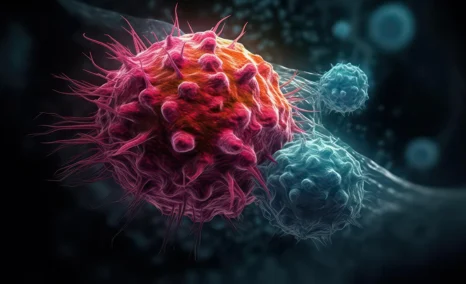Bananas! Mostly everyone loves bananas. Who wouldn’t? They taste good and they are a rich source of potassium. Besides lovely bananas, oranges, cantaloupe, honeydew, apricots, grapefruit, red meat are some other rich sources of potassium that people include in their diets. On average, a healthy human body needs 4,700 milligrams (mg) of potassium every day, says researchers. When not, the deficiency of potassium can hinder the normal functioning of the body, hinder fluid balance, cause blood pressure irregularities, stroke or even osteoporosis and kidney stones. However, what if there are higher levels of potassium accrued in the body? What happens then? Hyperkalemia.
What is Hyperkalemia?
Hyperkalemia is a condition that is a consequence of higher than normal levels of a substance called potassium in the blood. Digging deeper into its etiology, Hyperkalemia is defined as a serum of plasma that constitutes potassium levels on higher sides, usually higher than 5.0 mEq/L to 5.5 mEq/L. Higher levels of potassium can prove to be life-threatening in several instances leading to cardiac arrhythmias, muscle weakness or paralysis. However, during the milder version of the condition, the patients are generally asymptomatic. Hyperkalemia symptoms develop at the point where potassium levels are equal or higher than 6.5 mEq/L to 7 mEq/L. It is also witnessed that the rate of shifts in the levels of potassium in Hyperkalemia is of great importance that forms the basis behind the asymptomatic and symptomatic Hyperkalemia cases. (Leslie V. Simon et. al.)
What causes Hyperkalemia?
To dispel the myth first, Hyperkalemia never occurs due to the intake of food items rich in potassium. Even if these are consumed in larger quantities, it is deemed to be safe, however, in patients suffering from kidney diseases, or other diseases that constitute high-risk factors of Hyperkalemia.
Pseudohyperkalemia, a condition which falsely reflects the exact serum potassium levels in the body, is a quite common cause of Hyperkalemia. It is most commonly due to hemolysis of the sample causing intracellular potassium to be measured in the serum. Hemolysis is more common when a syringe is used as compared to a vacuum device. Then, cell injuries can lead to a release of larger quantities of intracellular potassium into the extracellular space. Metabolic acidosis can cause a rapid shift in potassium levels elevating it in extracellular space without any cell damage. Sepsis or dehydration may lead to hypotension, thereby, decreased tissue perfusion causing metabolic acidosis and ultimately potassium elevation. Insulin deficiency and diabetic ketoacidosis can also hamper peace in a similar way.
Besides the above-mentioned causes, certain medications (such as succinylcholine) are also listed as potential catalysts of Hyperkalemia. Tumor lysis syndrome is also known to create ruckus in patients receiving chemotherapies, causing acute Hyperkalemia due to massive cancer cell death.
How to treat Hyperkalemia?
Before beginning the treatment, it is essential to confirm the actual reason behind the Hyperkalemia. The urgency of therapy depends on symptoms, serum levels and explanation for Hyperkalemia. The current Hyperkalemia treatment market comprises intravenous calcium, insulin/dextrose, beta-2 adrenergic receptor agonists, sodium bicarbonate infusion, cation-exchange resins, sodium polystyrene sulfonate, calcium polystyrene sulphonate, Patiromer, sodium zirconium cyclosilicate, and loop diuretics in an emergency setting. The treatment often varies due to availability of pharmacologic agents. Whereas in an acute setting, a combination of insulin and glucose is the standard of Hyperkalemia treatment. Beta-2 adrenergic receptor agonists, Sodium bicarbonate infusions, and Cation-exchange resins are other Hyperkalemia treatment options available to maintain potassium levels. Furthermore, body potassium levels can be managed with the help of hemodialysis, sodium-potassium exchange resin binders, and diuretics.
How are Glucose and Insulin used to treat Hyperkalemia?
A combination of Insulin and Glucose are heralded as the mainstay of the Hyperkalemia treatment. Insulin lowers the serum potassium levels by activating sodium-potassium ATPase (Na–K ATPase) and trading sodium out of the cell in exchange of potassium into the cell. Serum potassium concentration starts to decrease within 15 min of administering insulin, thereby, restoring the optimum levels. In a nutshell, insulin can drive the potassium back into the cells.
Why is Calcium given for Hyperkalemia treatment?
According to the research, the concurrent calcium concentration helps in balancing the effect potassium has on myocytes. It does not interfere with the serum concentrations of potassium and is the first line of therapy in the setting of cardiac toxicity. Calcium chloride and calcium gluconate are the available options, however, calcium gluconate is often the initial drug of choice in patients with evidence of cardiac toxicity. Recently, in Japanese Hyperkalemia treatment market, Sodium zirconium cyclosilicate (Lokelma) got approved. Patiromer, a calcium exchange resin is the newest resin blessed by the FDA.
What are the new treatments for Hyperkalemia getting launched?
At present, the treatment of Hyperkalemia is based on physical examinations, blood tests, urinalysis, electrocardiogram tests and other such tests conducted for proper knowledge of the cause of the condition and patient’s state. However, the treatment should also focus on the efficacy and ability of the treatment by which they lower down the serum potassium levels along with a watchful eye on their side effects. The new drugs for Hyperkalemia need to be tailored as per the individuals for the best outcomes.
To bridge the gaps in the Hyperkalemia treatment market, several companies including Zeria Pharmaceutical/Vifor Pharma and Ardelyx are proactively working to cut the mustard in the developing a standard treatment option in the Hyperkalemia pipeline to create a significant positive shift in Hyperkalemia treatment market size.
Zeria’s Patiromer (ZG-801), an oral, non-absorbed, cation exchange polymer that contains a calcium-sorbitol counterion, was approved in 2015 in the US for Hyperkalemia treatment. Now the drug is commercially out in the market in several other countries, including those of the EU. Vifor, in March 2018, got the exclusive commercial rights to Patiromer for Japanese Hyperkalemia treatment market.
Then, there is RDX013, a candidate Ardelyx swears by. It is a novel, small molecule that works by leveraging the GI tract’s natural ability to secrete potassium into the gut’s lumen to reduce serum potassium levels. The company is planning to proceed for the Phase II clinical trials after the results from the Phase I study demonstrated the drug to be safe and well-tolerated.
In a lump sum, growing R&D is going to bolster the demand for better drugs for Hyperkalemia. At present, there is a paucity of effective therapies and safety data from clinical trials. Further, the lack of standard treatment protocols and guidelines, and a high cost of approved therapies also adds to the burden. No doubt that recent years have witnessed drugs walking the carpets in the Hyperkalemia treatment market with novel MoA; however, there still remains a lot to traverse.



